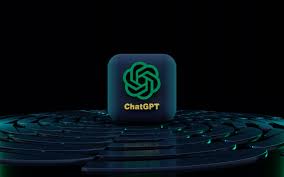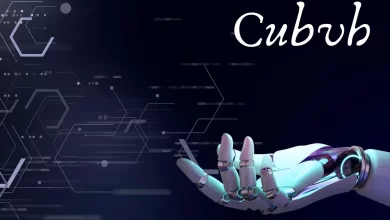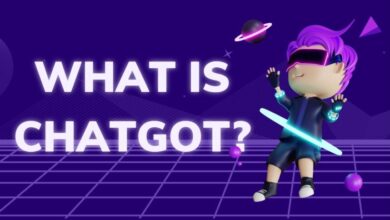
Unveiling the Marvel of Chat GPT: Decoding the Wonders of Conversational AI
In the realm of artificial intelligence, Chat GPT stands as a beacon of innovation, reshaping the landscape of human-computer interaction. As technology continues to advance at an unprecedented pace, understanding what Chat GPT is and its profound implications becomes paramount. In this exploration, we delve into the intricacies of Chat GPT, decoding its essence and unraveling the marvels it brings to the world of conversational AI.
What is Chat GPT?
Chat GPT, short for Chat Generative Pre-trained Transformer, represents a cutting-edge model in the family of language models developed by OpenAI. At its core, Chat GPT is an advanced form of artificial intelligence designed to engage in natural language conversations with users. It leverages the transformer architecture, a neural network design that excels at capturing contextual information and relationships within vast datasets.
Unlike traditional rule-based chatbots that follow predefined scripts, Chat GPT learns from diverse and extensive datasets to generate human-like responses. Trained on a multitude of internet text, it absorbs the nuances of language, enabling it to comprehend and generate coherent and contextually relevant replies.
The Evolution of Chat GPT
Chat GPT is a testament to the continuous evolution of natural language processing (NLP) models. It builds upon the foundations laid by its predecessors, such as GPT-3, refining and specializing in the domain of conversational interactions. The journey towards Chat GPT involves iterative improvements, with each version enhancing the model’s capabilities in understanding and generating human-like text.
One noteworthy aspect of Chat GPT’s evolution is its pre-training phase. During this stage, the model is exposed to a diverse range of data, absorbing patterns, grammar, and contextual relationships. This pre-training enables Chat GPT to generalize its understanding of language and adapt to various conversational contexts.
Key Features of Chat GPT
- Conversational Depth: One of the distinguishing features of Chat GPT is its ability to engage in deep and meaningful conversations. Unlike chatbots limited by predefined responses, Chat GPT can maintain context over extended dialogues, making it a valuable tool for a wide array of applications, from customer support to virtual assistants.
- Contextual Understanding: Thanks to its transformer architecture, Chat GPT excels in contextual understanding. It can grasp the nuances of language, understand the context of a conversation, and generate responses that align with the given context. This makes interactions with Chat GPT more natural and human-like.
- Adaptability: Chat GPT showcases a remarkable level of adaptability. It can seamlessly transition between different topics, responding to user queries across diverse domains. This adaptability is a result of its exposure to a vast range of internet text during the training phase.
- User-Friendly Interface: Chat GPT is designed to be user-friendly, providing a smooth conversational experience. Its natural language capabilities eliminate the need for users to communicate in a rigid, specific manner, fostering a more intuitive and accessible interaction.
- Creative Expression: Beyond its practical applications, Chat GPT exhibits a flair for creative expression. It can generate imaginative and contextually relevant content, making it a tool not just for information retrieval but also for creative brainstorming and idea generation.
Applications of Chat GPT
The versatility of Chat GPT opens the door to a myriad of applications across various industries. Some notable implementations include:
- Customer Support: Chat GPT can be integrated into customer support systems to provide instant and human-like responses to user queries. Its ability to understand and address complex issues makes it a valuable asset for enhancing customer service experiences.
- Virtual Assistants: As a conversational AI, Chat GPT can power virtual assistants, helping users with tasks, providing information, and facilitating seamless interactions. Its adaptability allows it to handle a wide range of user requests effectively.
- Content Generation: Content creators can leverage Chat GPT to brainstorm ideas, draft content, or even generate creative pieces. The model’s language prowess enables it to assist in content creation across various genres and styles.
- Language Translation: The contextual understanding of Chat GPT extends to language translation. It can process and translate text in a way that considers the nuances of language, contributing to more accurate and contextually relevant translations.
- Education: In educational settings, Chat GPT can serve as a virtual tutor, answering student queries, providing explanations, and engaging in interactive learning experiences. Its adaptability ensures it can cater to a wide range of academic subjects.
Challenges and Considerations
While Chat GPT represents a remarkable leap forward in conversational AI, it is not without its challenges and considerations. Some key points to ponder include:
- Bias in Training Data: The model learns from internet text, which may contain biases present in the data. This raises concerns about perpetuating and amplifying existing biases in the responses generated by Chat GPT.
- Ethical Use: The responsible and ethical use of Chat GPT is paramount. Its capabilities, if misused, could lead to the spread of misinformation, propaganda, or other harmful content. Striking a balance between innovation and ethical considerations is crucial.
- Understanding Context Limits: While adept at understanding context, Chat GPT may still face challenges in grasping highly nuanced or ambiguous situations. It’s essential to recognize the model’s limitations and use it judiciously in contexts that require precise comprehension.
- Data Privacy: Conversations with Chat GPT may involve sensitive information. Ensuring robust data privacy measures is imperative to safeguard user information and maintain trust in the use of such AI systems.
The Future of Chat GPT
As technology evolves, the future of Chat GPT holds exciting possibilities. Ongoing research and development aim to address current limitations and enhance the model’s capabilities further. Some potential directions for the future include:
- Fine-Tuning for Specific Domains: Customization of Chat GPT for specific industries or domains could enhance its performance in specialized contexts, ensuring more accurate and tailored responses.
- Improved Bias Mitigation: Researchers are actively working on refining methods to mitigate biases in AI models. Future iterations of Chat GPT may incorporate enhanced techniques to minimize and address bias in generated content.
- Enhanced Context Awareness: Advancements in contextual understanding could lead to even more nuanced and sophisticated conversations with Chat GPT. Improved context awareness may enable the model to navigate complex dialogues with greater precision.
- Collaborative Problem Solving: Future developments might enable Chat GPT to actively participate in collaborative problem-solving scenarios, contributing insights and suggestions in real-time across diverse fields.
Chat GPT stands at the forefront of conversational AI, revolutionizing the way humans interact with machines. Its blend of contextual understanding, adaptability, and natural language generation sets it apart as a powerful tool with widespread applications. As we navigate the ethical considerations and challenges associated with this technology, the ongoing advancements in AI research promise an exciting future where Chat GPT continues to redefine the boundaries of what is possible in the realm of human-computer interaction.



